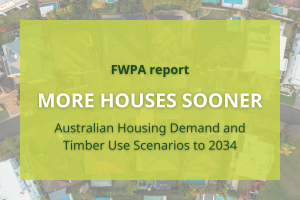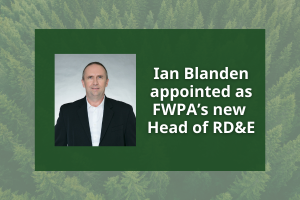In the face of a climate likely to become hotter and drier, and with bushfires continuing to pose a significant threat, a variety of forestry-related research initiatives are underway across Australia.
As an industry, forestry is particularly vulnerable to bushfire threat, with the associated risks having the potential to affect plantation companies, native forest managers, wood processors and manufacturers in a variety of ways.
A recent episode of FWPA’s WoodChat podcast series focused on various research projects aimed at increasing the industry’s capacity to minimise the impacts of bushfires.
One of the four interviewees featured in the episode was David Bowman, Professor of Pyrogeography and Fire Science at the University of Tasmania.
Professor Bowman shared details of a sophisticated fire detection tool known as FireHawk, which was trialled by SFM on Lenah Estate in Tasmania, as part of its own broad and ongoing efforts and commitment to working with fire.
SFM has a strong reputation for implementing technological advancements in Tasmania’s forestry sector, of which FireHawk is just one example. Another example trialled during a more recent fire season was ForestWatch. This ultimately superseded FireHawk due to its ability to offer increased client-facing information and content, demonstrating SFM’s ongoing commitment to embracing and testing the very latest technologies.
Both FireHawk and ForestWatch are camera-based fire detection systems that have the potential to enhance fire management practices, improve the protection of assets, and safeguard the broader community.
Each camera incorporates a 360-degree rotation combining high-definition imaging systems with purpose-built image processing software.
ForestWatch uses mathematical and image processing algorithms to optically scan wide areas and detect the earliest signs of smoke. Every 100 seconds, the camera takes a new image and compares it with the previous image. Where a change is detected, such as visible smoke, the person monitoring the system will receive an alert and can initiate a speedy response.
“The ForestWatch technology is essentially the 21st century version of a fire tower,” Prof. Bowman said.
“It was understood very early on that identifying fires in the landscape was critical step in fire management. Building lookouts, with people getting up early in the morning during the summer months and scanning the horizon into the evening, recording the distance and angle to any observed fire, was a primitive means of fire detection.
“Being able to do that in an automated way by using sensors and other technological means cuts out labour costs, improves health and safety for staff, and reduces the risk of human error.
“I have been involved with the SFM trial as an interested observer. I am always keen to hear about new fire management technologies as they evolve and their success during trials.”
Prof. Bowman said it’s important to explore these kinds of fire-mitigation measures because, as the climate changes, landscapes and live fuels are turning from non-flammable to flammable, creating additional risk to plantations.
“There’s an insurance element to that risk, because if an insured asset such as a plantation is under threat, your insurance company will want to be confident the plantation owner is taking the necessary steps to help protect that asset from damage,” he said.
“SFM established this technology as part of its broader rapid response approach to fire management, including investment in a helicopter with fire suppression equipment, because it’s one thing to identify a fire start, but it’s entirely another thing to be able to effectively do something about it.
“The problem with rapid attack strategies is that action needs to be taken quickly once a fire is identified, because fires escalate within seconds and minutes, and you can soon lose control. A helicopter is the most reliable way to get to the fire speedily.
“While rapid attack is very necessary in fire management, it is not sufficient on its own. You need to incorporate other elements, including fuel management, preparing landscapes, and having capacity for longer-lasting fire-fighting campaigns.
“Just as we see in our cities, I believe we will see more and more of these types of smart technologies installed in remote areas such as forests, to support fire management and other areas of forest management.”
The ForestWatch cameras trailed by SFM are owned and managed by the Working on Fire Australia organisation, part of a group of international companies specialising in the provision of integrated fire management services globally.
You can listen to the entire episode of WoodChat focused on current fire management and mitigation projects around Australia by clicking here.



